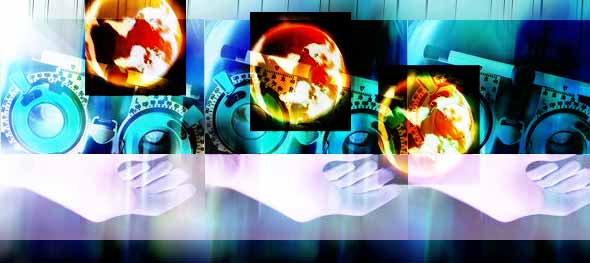BY LETTER
Q-Balls
 Image from Bernd Helfert |
Q-Balls are a form of exotic shadow matter, used in many hi-tech applications, particularly the manufacture of antimatter from matter.
(an extract from a partially translated transap physics module follows, with references):
beginitem: Editors NoteRecursion warning!, Node45E21/MGMU DateTime2.345E6/10499, stack truncated
Author: Verified, NodeE4568/EGEB DateTime4.154E3/10499
Q-balls have been known since antiquity, as non-topological soliton solutions with a conserved quantum number. Q-balls are a form of shadow matter, participating only in gravitational interactions.
Detailed study into basic minimal supersymmetric model (MSSM) theory, however, has been suppressed since the Dark Ages. When one studies the mathematics of even basic applications for Q-balls, one comes quickly to the realization that this field of study has been memegineered for very good reasons -- MSSM engineering has the ability to throw off the shackles the Archai have placed, by provided limitless fuel and energy to even basic modosophonts, as well as containing the seeds to a weapon so powerful even the Archai tremble in <3.6M deleted>
filterengaged:memeset:ConspiracyTheory
Q-balls have several properties of interest for engineering applications:
1. Q-balls reflect incident fermions as anti-fermions with a cross
section of unity.
Antimatter production is greatly simplified by taking advantage of massive Q-ball kernel structures. A hypothetical Q-factory would be a simple disk of Q-balls; incident protons and electrons (such as from neutral hydrogen) would be reflected as antiprotons orbited by positrons. Heavier materials would be similarly replaced with their antimatter analogues with extreme ease.
Such interactions would be of only academic interest if not for the next two properties:
2. Q-balls make up a portion of the dark matter of the universe, and are more common than natural cosmic monopoles. Some emissions from the core of the Milky Way have been traced back to positronic annihilations generated from electron flux on primordial Q-balls.
3. Q-balls of sufficient mass are metastable, evaporating on timescales longer than the current age of the universe.
Taken together, these properties indicate that Q-balls should be relatively plentiful for a civilization with proper resources to look in likely places. Once gathered (or manufactured), Q-material can be composed into structures ranging from primitive pits in the cores of asteroids, to complex free form structures shaped by metric engineering.
Such structures have the ability to create antimatter from matter (or matter from antimatter) for as long as a suitable supply can be maintained.
Indeed, it is hypothesized that several natural Q-forges exist in neutron stars that have captured relic Q-balls, which are naturally formed during the supersymmetric phase transitions that occurred as the universe cooled. In such systems, a single heavy Q-ball is calculated to be able to "eat" a neutron star in a few Gigayears, until the neutron star density becomes insufficient to maintain Fermi degeneracy. At this point, the neutrons revert to protons and electrons, and the neutron star explodes.
Q-Forge: See Q-Ball
Q-Ball: See Q-Forge
Related Articles
Appears in Topics
Development Notes
Text by Adam Getchell
Initially published on 31 December 2007.
Reference:
Astrophysical bounds on supersymmetric dark-matter Q-balls moved the links to papers into the "additional info section, December 11, 2022 - Worldtree
Initially published on 31 December 2007.
Reference:
Astrophysical bounds on supersymmetric dark-matter Q-balls moved the links to papers into the "additional info section, December 11, 2022 - Worldtree
Additional Information
"Supersymmetric dark matter Q-balls and their interactions with matter", A. Kusenko, L. Loveridge, M. Shaposhnikov
http://arxiv.org/PS_cache/hep-ph/pdf/0405/0405044v2.pdf
<Link>1. Q-balls reflect incident fermions as anti-fermions with a cross section of unity.
"Interactions of Q-balls and matter", S. Clark
http://arxiv.org/PS_cache/hep-ph/pdf/0604/0604137v2.pdf <Link>
2. "511 keV line from Q balls in the Galactic Center", S. Kasuyaa and F. Takahashi
http://arxiv.org/PS_cache/astro-ph/pdf/0508/0508391v2.pdf <Link>
3. "Particle Creation from Q-Balls", S. Clark
http://arxiv.org/PS_cache/hep-ph/pdf/0510/0510078v6.pdf <Link>






